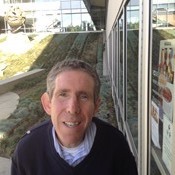Program Information
Noncontact Ultrasound Spectroscopy of Cortical Bone Phantoms: Reproducibility
K Ganezer1*, J Bulman2 , P Halcrow3 , I Neeson4 , (1)California State University Dominguez Hills, Physics Department, Carson, CA 90747 (2) Loyola Marymount University, ,Los Angeles CA, (3) California State University Dominguez Hills, Carson, CA, (4) VN Instruments Ltd, Elizabethtown, Ontario, Canada
Presentations
SU-E-U-3 (Sunday, July 12, 2015) 3:00 PM - 6:00 PM Room: Exhibit Hall
Purpose: In this study we update our studies presented in a talk in the ultrasound symposium in 2014 on the topic of noncontact ultrasound spectroscopy applied to cortical bone phantoms in which we found we found a high correlation between the BUA parameter and the Bone Mineral densities of the phantoms that was provided a linear regression with a r^₂as high as 0.96. The purpose of our current study was to have two separate ultrasound analyzers one at CSUDH in Carson California and a second analyzer at VN and associates in Elizabethtown, Ontario, Canada, in which the two analyzers only had minor differences in the transducers, pulse generators, and other hardware and software. Our goal was to compare the BUA parameters, speed of sound(SOS), attenuation, and spectra. We also considered changes in speed of sound, and attenuation taken 4 years ago with similar measurements made recently.
Methods: We used Matlab shell files to compute SOS for 2 different methods, BUA, and attenuation for 15 or 16 phantoms that ranged in BMD from 150-1700 gm/m^3. Linear regressions were calculated for sets of two parameters. Some of the phantoms were scanned using a pixelized grid
Results:
The two systems behaved similarly. There seemed to be only small changes in SOS with larger changes in BUA, that might be attributed to oxidation and loss of water.
Conclusion: There was a high degree of reproducibility in most of our measurements
Contact Email:


